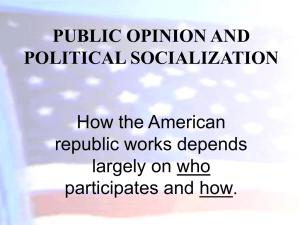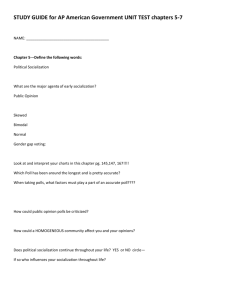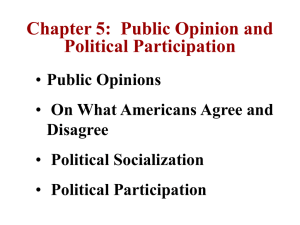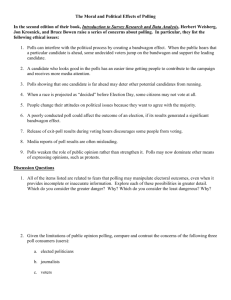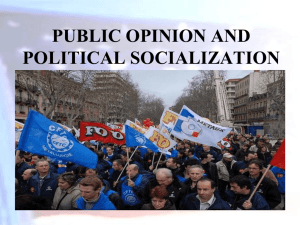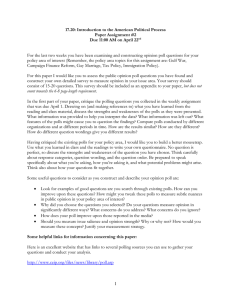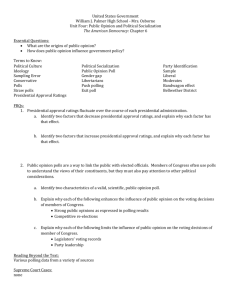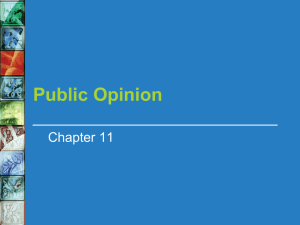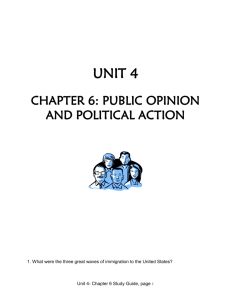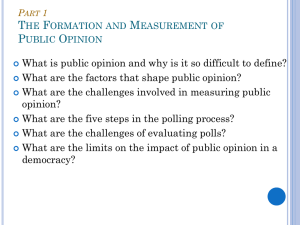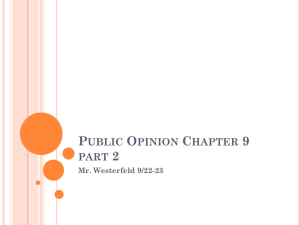public opinion and political socialization
advertisement
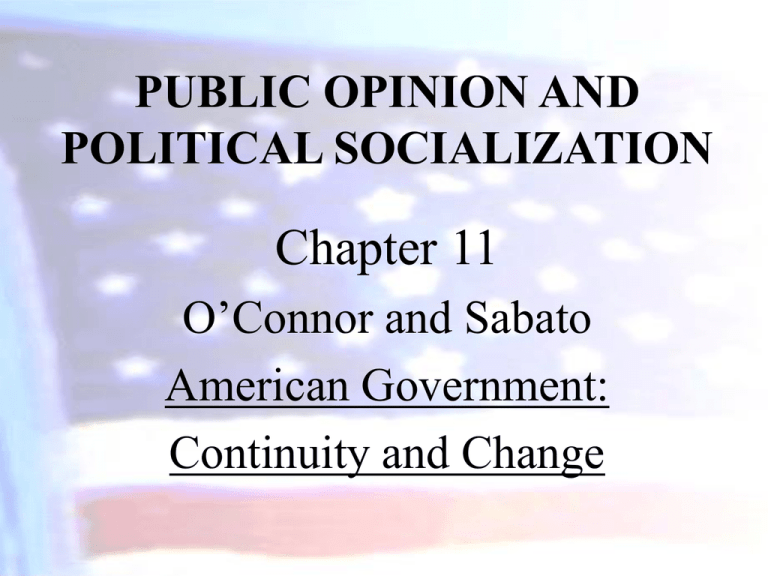
PUBLIC OPINION AND POLITICAL SOCIALIZATION Chapter 11 O’Connor and Sabato American Government: Continuity and Change PUBLIC OPINION AND POLITICAL SOCIALIZATION In this chapter we will cover… • What is Public Opinion? • Early Efforts to Influence and Measure Public Opinion • Political Socialization and Other Factors That Influence Opinion Formation • How We Form Political Opinions • How We Measure Public Opinion • How Polling and Public Opinion Affect Politicians, Politics, and Policy 1. What is Public Opinion? Public opinion is 'what the people think about an issue or set of issues at any given point in time' and opinions are normally measured by opinion polls. Public Opinion Polls Polls are interviews or surveys of a sample of citizens used to estimate how the public feels about an issue or set of issues. 2. Early Efforts to Influence and Measure Public Opinion • Public opinion polling as we know it today developed in the 1930s. • As early as 1824, newspapers have tried to predict election winners using polls. • Literary Digest used straw polls that are now seen as highly problematic. • The American Voter was published in 1960 and continues to influence the way we think of mass attitudes and behavior. – This book studied the 1952 and 1956 presidential elections and discussed how class coalitions led to party affiliation. 3. Political Socialization and Other Factors That Influence Opinion Formation • Political attitudes are grounded in values. We learn our values by a process known as political socialization. • Many factors influence opinion formation. – – – – The Family The Mass Media School and Peers The Impact of Events – Social Groups •Religion •Race •Gender •Region 4. How We Form Political Opinions Personal Benefits Political Knowledge Cues From Leaders Political Opinions 5. How We Measure Public Opinion In order for a poll to be reliable, it must have: • Proper question wording • An accurate sample – contacting respondents – Since 95% of Americans have phones, random phone calling would be a valid method. Measuring Public Opinion • In general, do not trust a poll that does not tell you the question wording, the sampling method, and the ways in which respondents were contacted. • Reputable pollsters will also tell you the number of respondents (the 'n') and the error rate (+ or 5%). • Any poll that tells you to call 555-5554 for yes and 555-5555 for no is unscientific and unreliable. This is not a random sample at all! Types of Polls • Tracking polls--continuous surveys that enable a campaign to chart its daily rise and fall in popularity. These may be a decent measure of trends. • Exit polls--polls conducted at polling places on election day. • Deliberative polls--a new kind of poll first tried in 1996. A relatively large scientific sample of Americans (600) were selected for intensive briefings, discussions, and presentations about issue clusters including foreign affairs, the family, and the economy. • A deliberative poll attempts to measure what the public would think if they had better opportunities to thoughtfully consider the issues first. 6. How Polling and Public Opinion Affect Politicians, Politics, and Policy • As early as the American Revolution, the authors of The Federalist Papers noted that “all government rests on public opinion.” • Politicians spend millions of dollars per year trying to define what the public wants. • Public opinion is unsteady and constantly changing, making reliable readings difficult. • Polls can distort the election process due to mass communications effects such as “bandwagon.”
